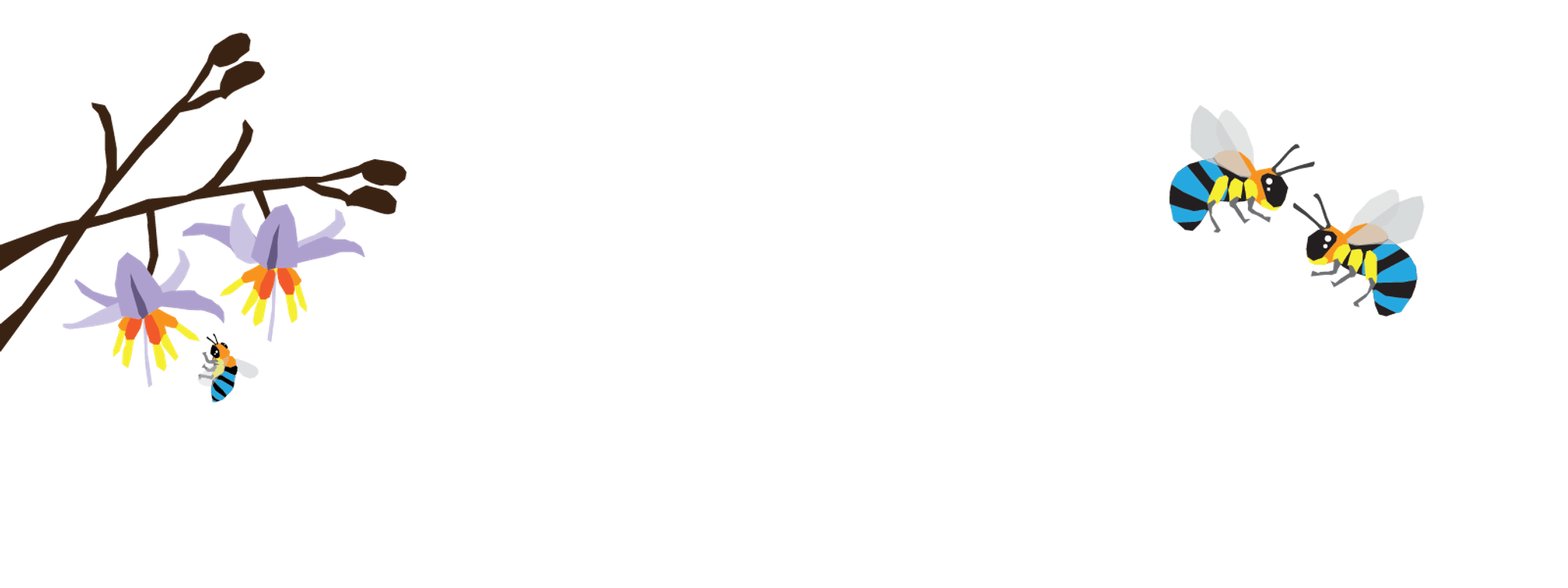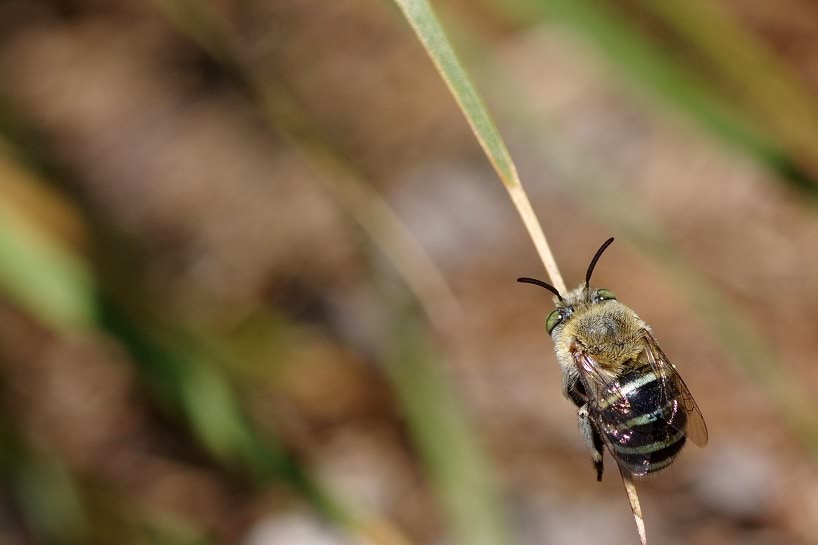The Victoria Nature Festival 2022 runs from 12 to 25 September. This year, we’ve got two special species headlining the event:
- the blue banded bee (Amegilla cingulata)
- matted flax-lily (Dianella amoena).
With its beautiful bright blue stripes and unique pollination technique, the blue banded bee is a rock star of the insect world. And the matted flax-lily is a critically endangered native plant that’s one of the bee's top fans.
We think these species deserve the limelight for several reasons.
Blue banded bee
Native blue banded bees are relatively common around greater Melbourne and across Victoria. So, if you keep your eyes peeled, you’re likely to see one.
Blue banded bees pollinate plants that hide pollen inside tiny capsules in their flowers using a special method called ‘buzz pollination’. This involves the bee grabbing the flower, shivering its flight muscles and tapping its head on the capsule to make the pollen shoot out.
Unlike the social introduced European honeybee, blue banded bees build solitary nests after they have mated. Yet, while they like their own company, they prefer to build their own little homes near other blue banded bees – kind of like a village.
Blue banded bees have a sting but aren’t aggressive and go about their business of foraging on native plants and a range of others such tomato plants.
(Picture credit: Luis Mata)
Matted flax-lily
Dianella amoena, or the matted flax-lily, is culturally significant for the Wurundjeri Woi Wurrung people.
Its berries and leaves are used for food and tea (but don't try this at home, some similar looking species can make you sick), weaving and making whistles to deter snakes. Unfortunately, it’s in danger of disappearing forever because of the destruction of grassland habitat.
Only a few thousand plants have been mapped through Victoria and Tasmania. Remnant plants are threatened by competition from weeds and population isolation. These factors can lead to genetic decline and low fertility.
All is not lost because a National Recovery Plan is being implemented for this iconic native plant and we’re committed to its long-term survival.
(Picture credit: Steve Sinclair)
You can help native flora and fauna thrive too by growing local native plants and creating blue banded bee habitat in your backyards and balconies.
How you can help
These colourful little insects like yellow and purple flowering native plants as well as other non-natives such as:
- tomato
- chilli
- basil
- lavender.
So, planting these species in your veggie garden can help attract blue banded bees to your home.
Talk to your local council or plant nursery to understand which locally indigenous flowering plants are best for your area.
Build a ‘bee’ village
Blue banded bees like to build nests in sand, clay soil and in mudbricks. Creating this kind of habitat around your home can help provide what they need to reproduce.
You can easily do this yourself by building blue banded bee ‘villages’ yourself. Here’s how:
- Grab a few old terracotta (preferred) or plastic pipes and some clay rich soil.
- Cut the pipes to around 20 to 30cm in length.
- Get hold of some clay rich soil. If you don’t have any in your garden, you can buy ‘tennis court loam’.
- Wet the soil until it forms a nice ball in your hand and then stuff the pipes with the mixture and flat it off at the of the pipe.
- Grab a pencil, and then put two ‘starter holes’ around 10cm deep in the clay.
- Leave it to dry for around three hours to form a nice hard brick.
- Now you’ll need to choose a spot for your bee village.
Pick a place that gets plenty of morning sun, is a bit protected from the elements and has shelter.
Blue banded bees like to nest near other bees, so you need to create a village of around 10 to 20 mud pipes that’s placed on something stable and low to the ground. Make sure they have a roof to protect them from the rain.
More resources on wildlife friendly gardening
- The Australian Plants Society (Victoria) has some great tips on growing native plants.
- Learn more about the matted flax-lily and its importance as a totemic species for Wurundjeri people.
- Check out the video by The New Joneses where Barkandji woman, Zena Cumpston, talks about the importance of native plants in caring for Country.
- Gardens for Wildlife have a handy booklet with lots of information on growing wildlife friendly gardens or you can check out their blog for more insights and inspiration.
Updated

